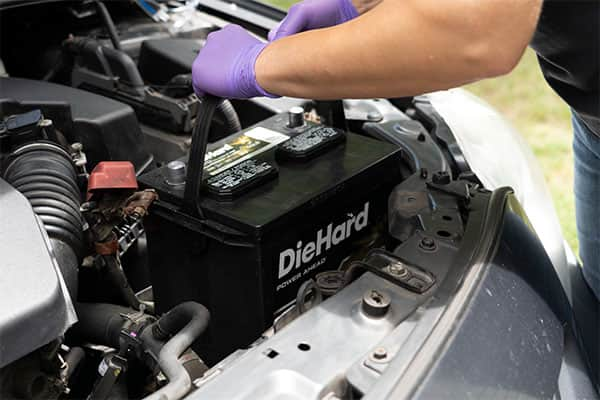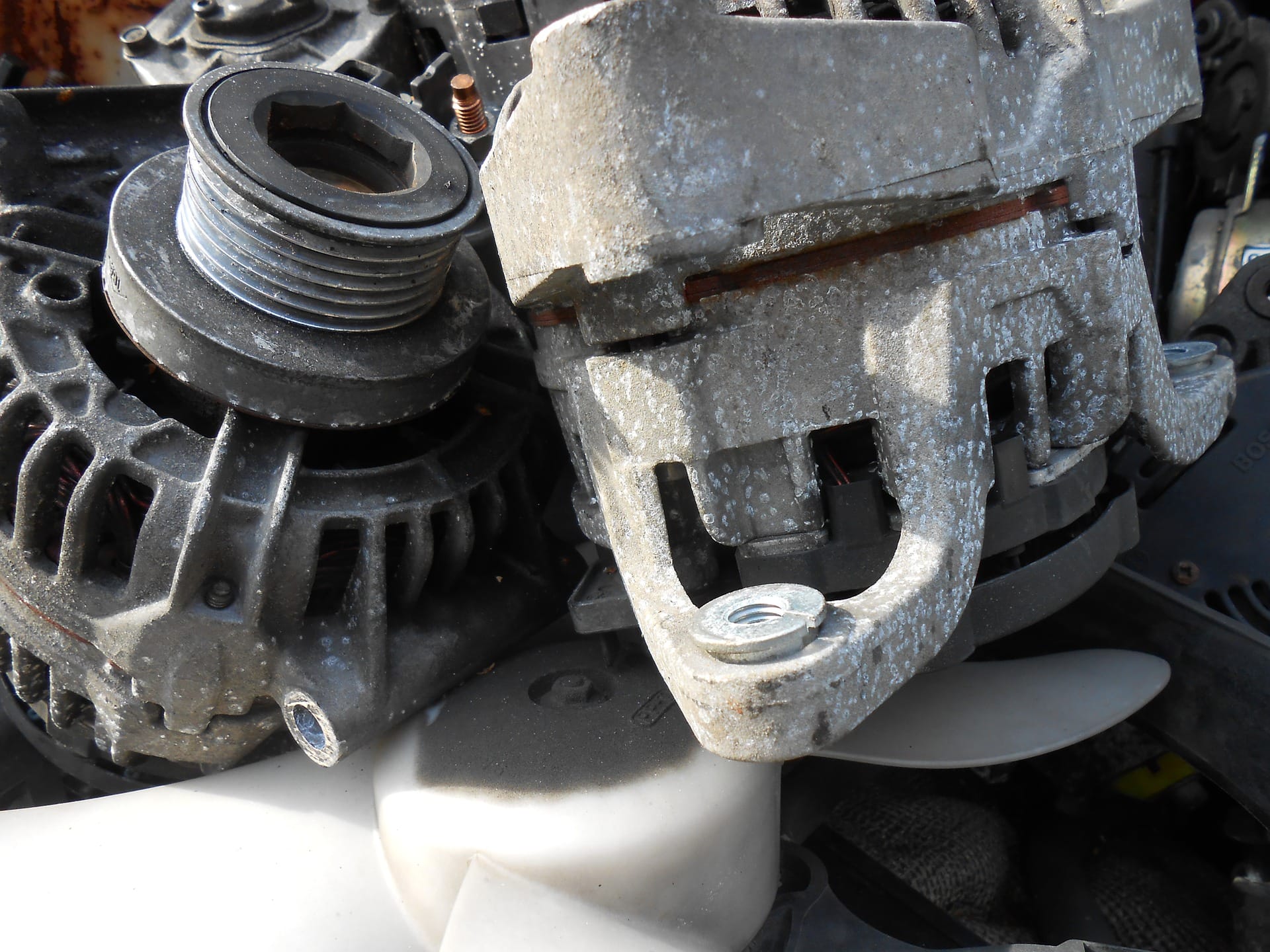Your engine relies on spark plugs every day — which means you do, too. So it's about time we get familiar with these key maintenance parts. You might be wondering how often you need to change your spark plugs, what sort of spark plugs you should use or whether you need to upgrade your spark-plug wires or other ignition components. Fortunately, these questions are easy to answer. Read on to learn about spark plugs, or skip down to a specific question below.
- What do spark plugs do?
- How do I know when to replace spark plugs?
- How much are spark plugs?
- How do I tell if a spark plug is bad?
- How do I check my spark plugs?
- Can I replace my own spark plugs?
- Can I clean my spark plugs?
- Do diesels have spark plugs?
- Do I need to change the spark plug wires and boots?
Spark Plugs | Getty
1. What do spark plugs do?
Unless you’re driving an electric car, in which case this article definitely isn’t for you, you’ve got what’s known as an internal combustion engine, or "ICE". Now, combustion requires a spark. Spark plugs are a crucial part of your engine because they’re what makes that combustion happen, both at ignition and while the engine moves through each combustion cycle during operation. When the plugs aren’t doing their job, your engine’s not getting the full combustion benefit. Everything from acceleration and fuel economy to engine smoothness is going to be negatively affected.
We should also note that diesel engines don't have spark plugs. Although a diesel engine does rely on combustion, the spark plug isn't necessary because higher compression heats up the air in the chamber so much that combustion occurs without the assistance of a spark.
2. How do I know when to replace spark plugs?
Your spark plugs should be changed at the interval given in your owner's manual, and this can vary widely based on the type of plug your vehicle uses. In older or high performance vehicles, you may be changing your plugs every 20,000-30,000 miles. If you drive at moderate speeds and under moderate acceleration, your plugs may last 40,000 miles or more while still operating efficiently. Newer vehicles, on the other hand, may use plugs that last anywhere from 60,000-120,000 miles. For more information, read our article on the four types of spark plugs. Regardless of what kind you use, though, you want to replace them on time because spark plugs are such an important part of keeping your engine running at maximum power.
As for which type of spark plugs you'll need, most folks will want to stick with the plugs recommended in their owner's manual. For more info, here's a more on the different types of spark plugs.
3. How much are spark plugs?
Spark plugs are one of the most affordable parts on your vehicle. The cost will vary by type, though. Of the four common types of spark plug, copper is the most economical, followed by single platinum, double platinum and finally iridium. Expect some variation, but a general range is as low as $2 per plug on copper and around $9 for iridium. Keep in mind that iridium plugs also last much longer, though. For more information on this, take another look at the four types of spark plugs and remember that it is important to use the type of plug specified by your manufacturer. Check out our spark plug guide to find the right type for your vehicle and to see special offers.
4. HOW do i tell if a spark plug is bad?
You might start to suspect a spark plug is bad if you experience any of these symptoms:
- Rough running engine
- Misfire code on one or more cylinders
- Reduced fuel economy
- Trouble accelerating normally
- Difficulty starting the engine
As a general rule of thumb, if something seems funny about your engine, spark plugs should be one of your first checks. If you’re a hands-off kind of car owner, of course, you’ll just take it to your mechanic and get it diagnosed. But if you want to inspect the plugs yourself, it’s a relatively easy job on many engines. Keep reading to find out how.
5. How to Check a Spark Plug
Exact steps to remove a spark plug will vary by vehicle. Find the one that’s easiest to access and then take a look at what’s in your way, such as a plastic engine cover or maybe a wiring harness. If you’re unsure, check your repair manual to find out where the plugs are located. If the plugs appear dirty, that could mean you’ve got an oil leak or excessive carbon deposits. And if they look damaged, your engine might be running too hot or misfiring. Keep in mind, though, that even if your spark plugs look fine, they might be past their prime. Consult your owner’s manual for when to replace spark plugs. If you think you’re past due, we recommend replacing them just to be safe.
6. Can I replace my own spark plugs?
Yes! If you’ve already accessed your spark plugs to inspect them, the only additional step is to replace them with a ratchet and spark plug socket. Keep in mind there are a few different sizes of spark plug sockets available, so be sure to check which one fits your engine. You may also need an extension and swivel socket, depending on the style of spark plug socket you have and the setup of your engine.
Make sure you don't use power tools when you’re dealing with spark plugs. They’re fragile, and if they crack, you may not notice until you experience the misfire that results. Thread them in using hand tools, and once they’re snug, use a torque wrench to tighten them according to the manufacturer's specification.
Now, replacing spark plugs on some engines is challenging, like on transverse-mounted six or eight cylinders. Before starting, inspect your work area and make some decisions about what components will need to come off in order to access the spark plugs. If you do need to remove the intake or even the cowl, we recommend labeling all of your bolts in baggies for when you’re going back together. Read more about replacing your spark plugs in our step-by-step guide.
Unsure what a transverse-mounted engine is? No worries, we've got you covered. Engines can either be placed in a transverse or longitudinal position in the engine bay. Typically, you'll find transverse engines in FWD vehicles and longitudinal in RWD. Longitudinal means you'll have easy access to half of the cylinders on the driver's side and the other half on the passenger side. Transverse, on the other hand, means your FWD vehicle has the engine positioned with one bank facing the front of the engine compartment and the other facing the rear.
7. Can I clean my spark plugs?
You’ll find various home remedies for cleaning spark plugs, but we strongly recommend just swapping them out if they’re that dirty. From a money perspective, spark plugs are a car owner’s dream, because they’re an essential engine part that’s also inexpensive.
8. Do DIESEL ENGINES HAVE SPARK PLUGS?
Diesel engines don't have spark plugs. Although a diesel engine does rely on combustion, the spark plug isn't necessary because higher compression heats up the air in the chamber so much that combustion occurs without the assistance of a spark.
9. Do I need to change the spark plug wires and boots?
Short answer: yes. Find out how to troubleshoot spark plug wire problems and check out how to replace spark plug wires and boots. Still on the fence about tackling plugs and wires yourself? Watch popular YouTuber Chris Fix break it down for you so you can see how it's done.
Do you change your own spark plugs? Share your tips and experiences in the comments below.










